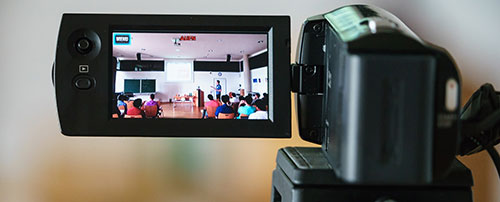Digital accessibility at KTH
Digital accessibility means that everybody – regardless of disabilities – can use our digital services and websites. KTH has an Accessibility Report and a Working Group that actively works with the issues.

The need for accessibility has always existed, but the requirements have been significantly increased with the Act on Accessibility to Digital Public Service (DOS Act). At KTH, we take digital accessibility seriously and work continuously with information sharing and education to increase awareness and knowledge of the issues. We also have an Accessibility Report (Swe) which is updated on an annual basis.

Why is digital accessibility important?
- Accessibility is necessary for some people in order for them to study or work at KTH, for example. About 20 percent of the Swedish population has some kind of disability, such as impaired vision or mobility.
- Accessibility often contributes to increased usability, and a better experience for everyone.
- Accessibility means that our digital investments have a greater effect and that we reach more people.
KTH's organisation and activities
In 2020, KTH started a project to work focused on digital accessibility. A steering group and a working group were appointed with the task of further developing digital accessibility at KTH. The working group looks at, among other things, how existing websites can be improved, how new mobile applications can be developed in an accessible way and how the knowledge among KTH's employees can be increased.
Beslut om projektdirektiv om tillgänglighet till digital offentlig service på KTH (pdf 939 kB)
News about digital accessibility
Current activities
KTH's Steering Group for Digital Accessibility
The Steering Group decides on the budget distribution, the annual Accessibility Report and the composition of the working group for digital accessibility.
KTH's Working Group for Digital Accessibility
The group is led by Jan Gulliksen, Vice President for Digitization. Jeanette Thörnberg, Project Administrator at the IT department, is the secretary and coordinates the practicalities of the group's meetings.
Project objectives
- The project will investigate how the 50 accessibility criteria are to be implemented in the operations, on the basis of listed exceptions in the desicion of the program.
- The project will compile a list of remaining activities, including priority order and schedules.
- The project will list related laws in the area of accessibility and analyze connections to the new DOS law.
- The project team will ensure ongoing work on the Accessibility Report and how improvement measures are taken.
- The project will investigate the need for resources to manage digital accessibility at KTH. This includes both skills needs and IT infrastructure.
- The project will coordinate ongoing efforts within various groupings at KTH and propose how the work should be organized in a later management phase, including responsibilities.
- The project will compile an overall accessibility report that includes the points above.
- The project does not take responsibility for ensuring that all websites / documents / systems within KTH comply with accessibility legislation. The responsibility for law compliance lies upon the respective activities within KTH.
